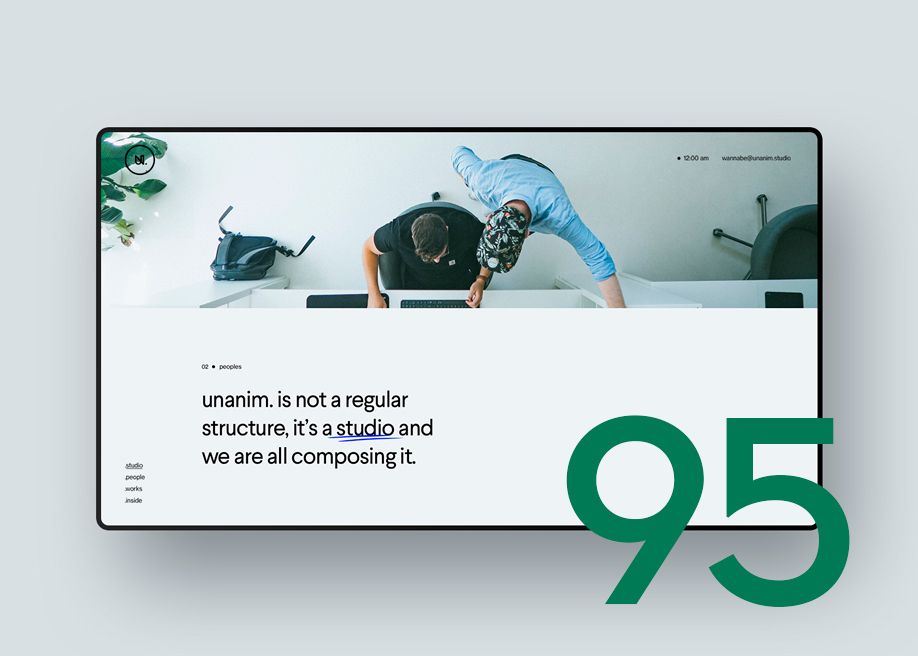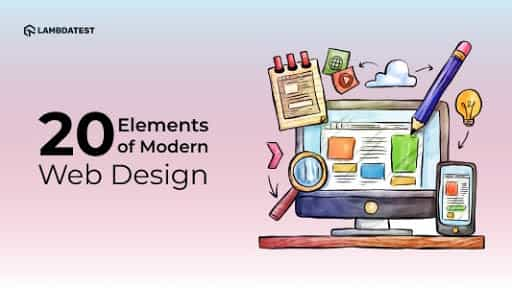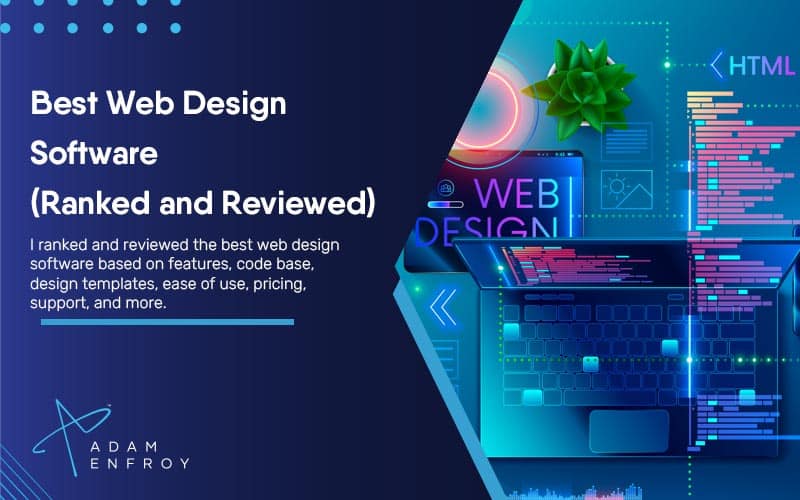All Categories
Featured
Table of Contents
- – Web Design And Development - Invision Tips and...
- – Web Design - Linkedin Learning, Formerly Lynd...
- – Web Design - Uci Division Of Continuing Educa...
- – Web Developers And Digital Designers - Bureau...
- – Awwwards - Website Awards - Best Web Design T...
- – Responsive Design Best Practices - Google Sea...
- – Law Firm Website Design, Attorney Web Design...
- – Web Design Services + Website Development Ag...
- – $899 - Custom Mobile Friendly Website Design...
- – Top 30 Web Design Companies - Apr 2022 - Des...
- – Learn Responsive Design - Web.dev Tips and T...
Web Design And Development - Invision Tips and Tricks:
Quick summary Usability and the utility, not the visual design, figure out the success or failure of a website. Considering that the visitor of the page is the only individual who clicks the mouse and therefore decides whatever, user-centric design has developed as a standard method for effective and profit-oriented web style - web design frederick md.
and the energy, not the visual design, identify the success or failure of a website. Given that the visitor of the page is the only person who clicks the mouse and for that reason chooses everything, user-centric design has become a basic technique for successful and profit-oriented web design. If users can't use a function, it might as well not exist.
g. where the search box ought to be placed) as it has already been performed in a number of posts; instead we concentrate on the techniques which, used appropriately, can cause more advanced design decisions and simplify the procedure of viewing provided details. Please discover that you may be thinking about the usability-related short articles we have actually released before: Concepts Of Good Website Style And Effective Web Style Guidelines, In order to use the principles correctly we initially require to understand how users interact with sites, how they believe and what are the standard patterns of users' habits.
Web Design - Linkedin Learning, Formerly Lynda.com Tips and Tricks:
Visitors glimpse at each new page, scan some of the text, and click the first link that captures their interest or slightly resembles the important things they're searching for. In fact, there are large parts of the page they don't even look at. Most users search for something interesting (or helpful) and clickable; as quickly as some promising prospects are discovered, users click.
If a page supplies users with top quality material, they are ready to jeopardize the content with advertisements and the style of the site. This is the reason why not-that-well-designed websites with top quality content get a great deal of traffic over years. Content is more crucial than the style which supports it.

Users don't read, they scan. Notice how "hot" locations abrupt in the middle of sentences. This is common for the scanning process. Really easy concept: If a website isn't able to satisfy users' expectations, then designer failed to get his task done correctly and the business loses cash. The higher is the cognitive load and the less instinctive is the navigation, the more willing are users to leave the website and look for options.
Web Design - Uci Division Of Continuing Education Tips and Tricks:
Neither do they scan web page in a direct style, going sequentially from one website section to another one. Rather users satisfice; they select the first reasonable choice. As quickly as they discover a link that appears like it might result in the goal, there is an excellent possibility that it will be right away clicked.
It doesn't matter to us if we understand how things work, as long as we can utilize them. If your audience is going to imitate you're creating signboard, then style fantastic signboards." Users want to be able to manage their browser and rely on the constant data discussion throughout the site.
If the navigation and site architecture aren't user-friendly, the variety of question marks grows and makes it harder for users to understand how the system works and how to receive from point A to point B. A clear structure, moderate visual clues and quickly recognizable links can help users to find their path to their objective.
Web Developers And Digital Designers - Bureau Of Labor ... Tips and Tricks:

Considering that users tend to check out sites according to the "F"-pattern, these three declarations would be the first elements users will see on the page once it is filled. The style itself is basic and instinctive, to understand what the page is about the user requires to search for the response.
When you've achieved this, you can interact why the system is beneficial and how users can gain from it. Individuals will not use your web site if they can't find their way around it. 2. Don't Misuse Users' Patience, In every task when you are going to use your visitors some service or tool, attempt to keep your user requirements minimal.
First-time visitors are ready to, not filling long web kinds for an account they may never utilize in the future. Let users check out the site and find your services without requiring them into sharing personal data. It's not affordable to require users to enter an email address to test the feature.
Awwwards - Website Awards - Best Web Design Trends Tips and Tricks:
And that's what you desire your users to feel on your web website. The registration can be done in less than 30 seconds as the form has horizontal orientation, the user does not even require to scroll the page.
A user registration alone suffices of an obstacle to user navigation to minimize incoming traffic. 3. Manage To Focus Users' Attention, As websites provide both static and dynamic material, some aspects of the user interface attract attention more than others do. Certainly, images are more distinctive than the text simply as the sentences marked as strong are more appealing than plain text.
Focusing users' attention to particular areas of the site with a moderate use of visual components can assist your visitors to obtain from point A to point B without thinking of how it actually is expected to be done. The less enigma visitors have, the they have and the more trust they can establish towards the business the site represents.
Responsive Design Best Practices - Google Search Central Tips and Tricks:
Aim For Function Exposure, Modern web designs are typically criticized due to their approach of assisting users with visually appealing 1-2-3-done-steps, large buttons with visual impacts and so on. From the style point of view these elements in fact aren't a bad thing.
The site has 9 main navigation options which show up at the first look. The option of colors may be too light, though. is an essential principle of successful user interface design. It does not actually matter how this is attained. What matters is that the content is well-understood and visitors feel comfy with the method they connect with the system.
Instead a cost: simply what visitors are looking for. An ideal option for effective writing is touse short and concise expressions (come to the point as quickly as possible), usage scannable design (classify the material, use multiple heading levels, utilize visual elements and bulleted lists which break the flow of consistent text blocks), usage plain and objective language (a promotion doesn't require to sound like advertisement; offer your users some reasonable and unbiased factor why they need to use your service or remain on your website)6.
Law Firm Website Design, Attorney Web Design, Lawyer ... Tips and Tricks:
Users are hardly ever on a website to enjoy the style; furthermore, in many cases they are searching for the details despite the design - web design frederick md. Pursue simpleness rather of intricacy. From the visitors' perspective, the best website style is a pure text, without any advertisements or more material blocks matching precisely the inquiry visitors utilized or the material they have actually been searching for.
Finch plainly provides the information about the site and gives visitors an option of choices without overcrowding them with unnecessary material. Not just does it help to for the visitors, but it makes it possible to perceive the details provided on the screen.
Complex structures are more difficult to read, scan, examine and deal with. If you have the option in between separating 2 design segments by a visible line or by some whitespace, it's generally better to utilize the whitespace service. (Simon's Law): the much better you manage to supply users with a sense of visual hierarchy, the easier your content will be to perceive.
Web Design Services + Website Development Agency Tips and Tricks:
The exact same conventions and rules must be used to all elements.: do the most with the least amount of cues and visual aspects. Clearness: all parts must be designed so their meaning is not uncertain.
Conventions Are Our Pals, Traditional style of website components does not result in an uninteresting web website. It would be an usability nightmare if all websites had various visual presentation of RSS-feeds.
understand what they're anticipating from a website navigation, text structure, search placement etc. A normal example from functionality sessions is to equate the page in Japanese (presuming your web users do not know Japanese, e. g. with Babelfish) and provide your usability testers with a task to discover something in the page of various language.
$899 - Custom Mobile Friendly Website Design By Go Web ... Tips and Tricks:
Test Early, Test Typically, This so-called TETO-principle needs to be used to every web style task as use tests frequently offer into considerable problems and concerns related to a given layout. Test not too late, not too little and not for the wrong reasons.
Some essential indicate keep in mind: according to Steve Krug, and screening one user early in the job is better than screening 50 near completion. Accoring to Boehm's first law, mistakes are most frequent during requirements and design activities and are the more pricey the later they are eliminated.
That means that you design something, test it, repair it and then check it again. There may be issues which haven't been found during the first round as users were almost blocked by other issues. functionality tests. Either you'll be indicated the issues you have or you'll be pointed to the absence of major design defects which is in both cases a helpful insight for your job.
Top 30 Web Design Companies - Apr 2022 - Designrush Tips and Tricks:

This holds for designers. After you have actually worked on a site for couple of weeks, you can't observe it from a fresh viewpoint anymore. You understand how it is built and for that reason you understand exactly how it works you have the wisdom independent testers and visitors of your site wouldn't have.
It can be connected to other areas such as graphic style, user experience, and multimedia arts, but is more aptly seen from a technological perspective. It has actually become a large part of people's everyday lives. It is tough to picture the Web without animated graphics, various designs of typography, background, videos and music.

During 1991 to 1993 the World Wide Web was born. Text-only pages might be viewed using a simple line-mode internet browser. In 1993 Marc Andreessen and Eric Bina, created the Mosaic browser. At the time there were multiple internet browsers, however most of them were Unix-based and naturally text heavy. There had actually been no integrated technique to graphic style elements such as images or sounds.
Learn Responsive Design - Web.dev Tips and Tricks:
The W3C was created in October 1994 to "lead the World Wide Web to its complete capacity by establishing common protocols that promote its development and ensure its interoperability." This dissuaded any one company from monopolizing a propriety browser and programs language, which might have altered the effect of the World Wide Web as a whole.
As this has actually taken place the technology of the web has actually likewise moved on. There have actually also been significant modifications in the way people use and access the web, and this has changed how websites are created. Because completion of the internet browsers wars [] new browsers have actually been launched. Many of these are open source meaning that they tend to have much faster development and are more encouraging of brand-new requirements.
Learn more about Lovell Media Group LLC or TrainACETable of Contents
- – Web Design And Development - Invision Tips and...
- – Web Design - Linkedin Learning, Formerly Lynd...
- – Web Design - Uci Division Of Continuing Educa...
- – Web Developers And Digital Designers - Bureau...
- – Awwwards - Website Awards - Best Web Design T...
- – Responsive Design Best Practices - Google Sea...
- – Law Firm Website Design, Attorney Web Design...
- – Web Design Services + Website Development Ag...
- – $899 - Custom Mobile Friendly Website Design...
- – Top 30 Web Design Companies - Apr 2022 - Des...
- – Learn Responsive Design - Web.dev Tips and T...
Latest Posts
Awwwards - Website Awards - Best Web Design Trends Tips and Tricks:
Website Design - Best Ecommerce Web Design By Shopify Tips and Tricks:
Web Design Shopify:
More
Latest Posts
Awwwards - Website Awards - Best Web Design Trends Tips and Tricks:
Website Design - Best Ecommerce Web Design By Shopify Tips and Tricks:
Web Design Shopify: